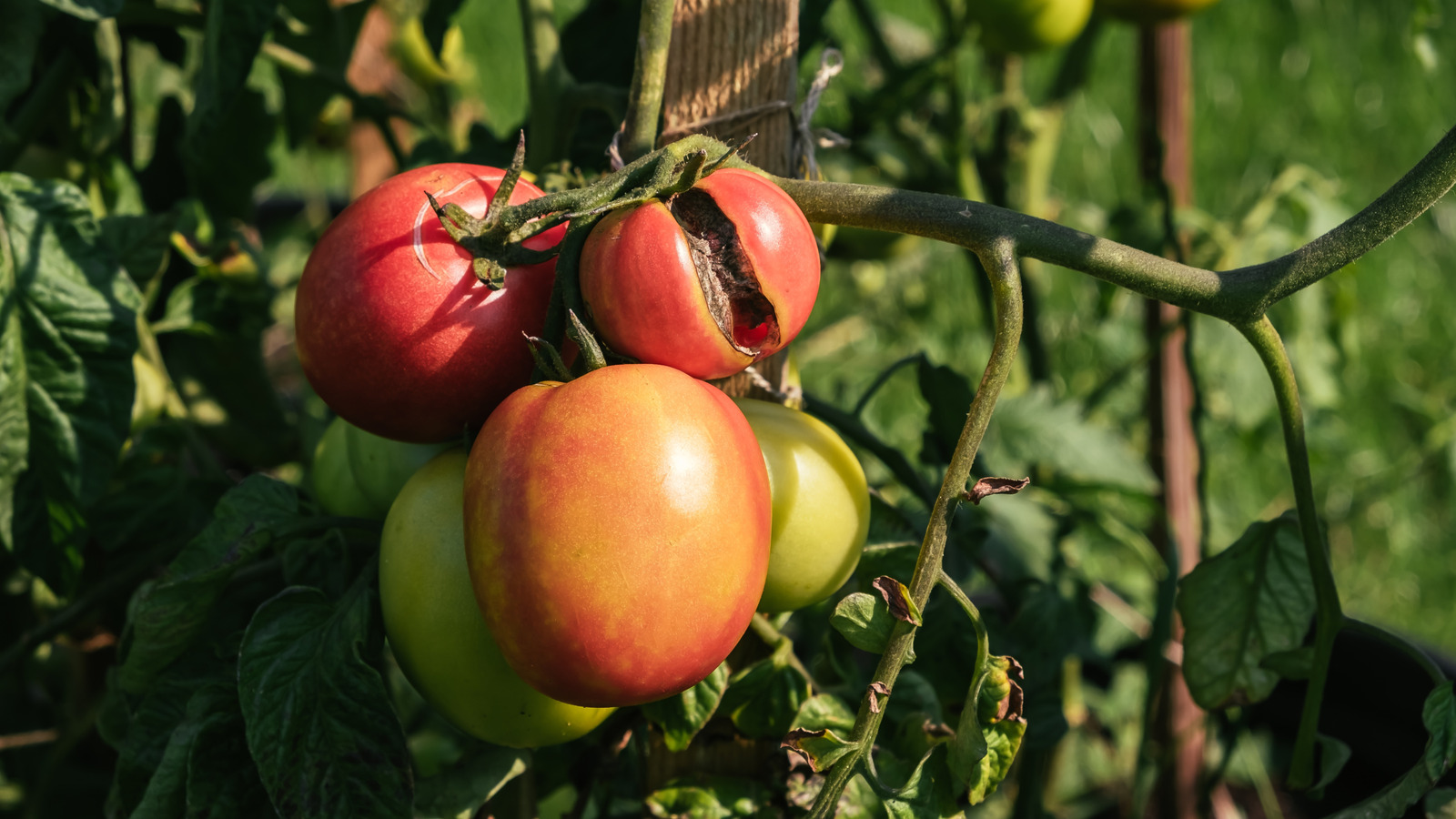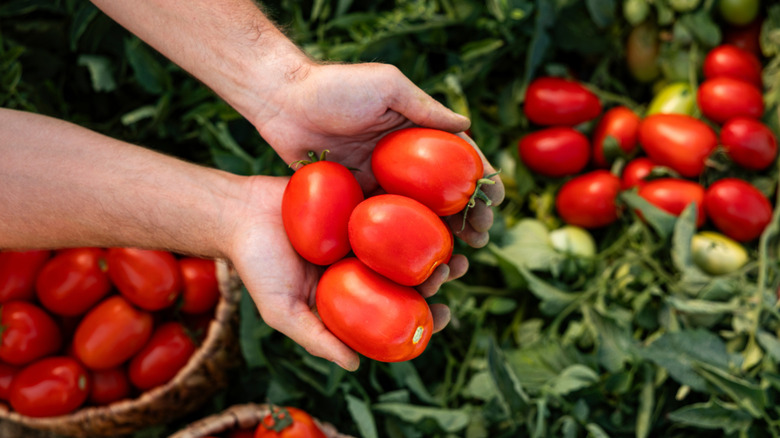Have you ever tried to grow tomatoes, watched them blossom, and counted down the days until you can pop them off the vine and turn them into a fresh tomato-based pasta sauce (and please don’t ignore the vine when you do), only to go out and find that they’ve developed an unseemly crack down the side? The good news is you’re not alone. Split tomatoes are a common issue among plant enthusiasts, and one that can be avoided with a useful watering tip.
A tomato splitting from the top is known as radial cracking, and it occurs when the plant gets too much water as it reaches ripeness. Your first step in prevention is to make sure that your plants are draining properly. However, the best thing you can do is ensure that the plants are consistently moist, rather than letting them dry out and then watering them. If you wait until the roots are dry and leaves start to droop, then overcompensate by giving them a bunch of water at once, the plants will absorb the water too quickly, sending it to the fruit and causing it to start to crack as the inside of the fruit expands faster than the skin.
Keeping an eye on the weather forecast is also important — after all, it’s not only you providing water. If your tomato plants are near-ripe and haven’t been watered in a couple of days, consider harvesting them, as a deluge of rain could have the same effect. All it takes is one ill-timed thunderstorm for your nightshade to go from beautiful and promising to cracked and disappointing.
Fighting, eating, and storing cracked tomatoes
In an effort to combat this blight, consider adding a couple of inches of mulch to your soil. Not only will this help keep your tomato garden fungus-free, but it also maintains more consistent moisture levels. This will reduce the chances of accidentally subjecting your plants to drying out and then drinking too fast. Then, make sure you’re giving them water every two to three days, in a quantity that comes to about an inch a week.
Your tomato experiencing radial cracking doesn’t necessarily mean it needs a one-way ticket to the compost heap. While the crack is vulnerable to attracting mold and insects, if you can cut it out of the fruit altogether, the rest of the tomato should still be good to eat. Just make sure not to use cracked tomatoes for canning, as that can introduce bacteria to your entire batch. If you do spot cracks beginning to form on your tomato, consider getting it off the vine even if it hasn’t fully ripened yet. That will increase the likelihood of it still being edible, as it can ripen in a fruit bowl without the cracks becoming more pronounced.
Once you’ve saved your tomatoes from the perils of splitting, you have around 10 days to use your fruit before it starts to go bad, or you can dehydrate the fresh tomatoes to create long-lasting flavor bombs. Baking them in the oven at 200 degrees Fahrenheit for six hours will create a delicious snack that can stay good for up to six months.






